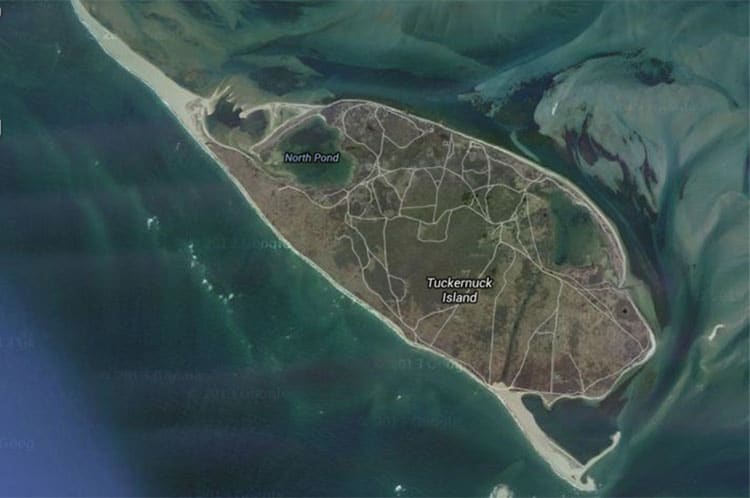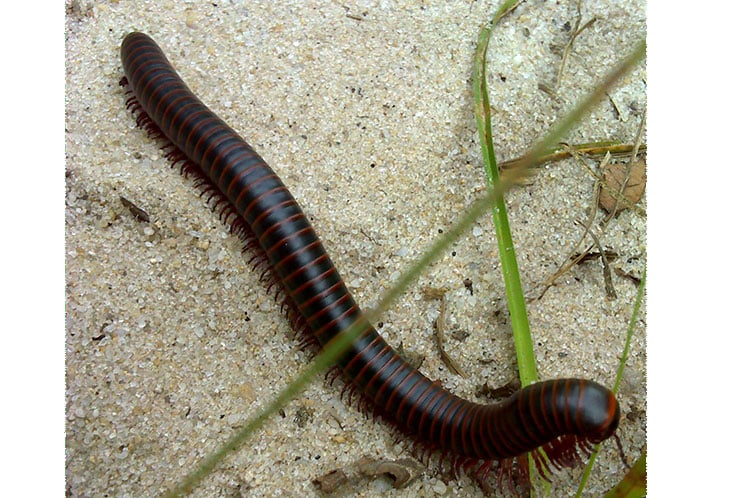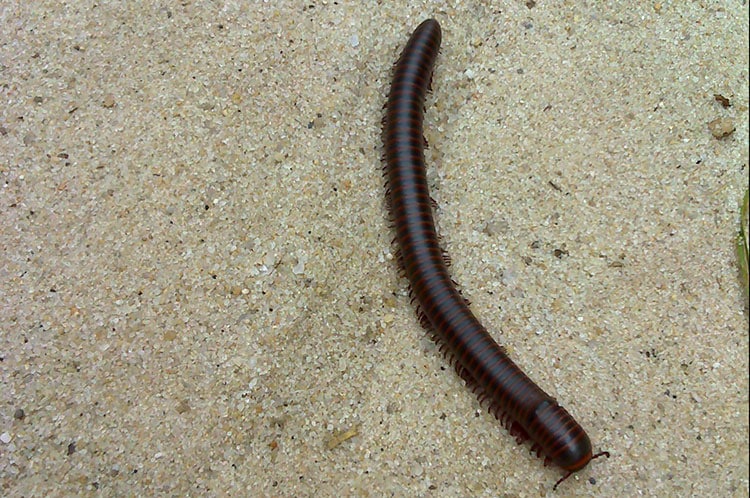• by Dr. Sarah D. Oktay, Managing Director UMass Boston Nantucket Field Station •

Two famous and accomplished ecologists, the late Robert MacArthur of Princeton University, and still kicking E.0. Wilson of Harvard, developed a theory of “island biogeography” to explain how populations of plants and animals evolve from initial immigration and extinction to eventual equilibrium on islands. They proposed that the number of species on any island reflects a balance between the rate at which new species colonize it and the rate at which populations of established species become extinct. Their latest edition, an update from the original 1967 version of “The Theory of Island Biogeography”, came out in 2001 (http://press.princeton.edu/titles/7051.html). The theory of island biogeography is often used to predict what will happen in small patches of forest that are separated in “oceans” of habitat due to fragmentation by human development. Conservation biology is the scientific study of the nature and status of Earth’s biodiversity with the aim of protecting species, their habitats, and ecosystems from excessive rates of extinction and the erosion of biotic interactions. Some conservation biologists think that the theory of island biogeography can be used to help reserve managers design nature preserve size based on the ability of the land to accommodate a variety of creatures, allowing for diversity while reducing extinctions or genetic bottlenecks.
The beauty of doing science on an actual island is that you start with a known set of creatures, some of which became extirpated (locally extinct) as they are used for food, and others of which may be introduced by humans during Olympic practice swimming trials, or while stowed away on ships. Many of Nantucket’s and presumably Tuckernuck’s original vertebrate fauna such as raccoons, foxes, and deer (more about that in my Mythbusters column http://www.yesterdaysisland.com/2010/science/22.php) were consumed and the distance from the mainland made it harder for animals to cross over Nantucket Sound as it formed after the last glacier receded. Now the animals and plants that are on Nantucket and Tuckernuck have the ability to evolve independent from their brethren on the mainland. Scientists associated with the Nantucket Biodiversity Initiative and others who have visited both islands during that past 150 or so years have been documenting these changes in plant and animal (and fungal) communities over time.
According to the TLT website: “Sparsely populated, Tuckernuck is a coastal island 25 miles south of Cape Cod. The Island’s 860 acres support plant communities distinctive to the North Atlantic Region. It hosts several state-rare plant and animal species which thrive in the harsh maritime conditions. Along with its nearby sister-islands of Nantucket and Muskeget, and Martha’s Vineyard a bit farther to the west, it forms a boundary that distinguishes Nantucket Sound from the Atlantic Ocean…..The natural dynamics of erosion and accretion along Tuckernuck Island’s shoreline are the source of its miles of beach, ever-shifting shoals, and nearshore sandbars that are haulout points and rich feeding grounds for thousands of seals, sea ducks and shorebirds. The entire island of Tuckernuck has been identified by the Commonwealth of Massachusetts as Core Habitat and is a critical component for protecting statewide biodiversity.” The TLT has been actively documenting the shorebirds found on their island. Piping plovers, least terns and American oystercatchers nest and raise young on Tuckernuck beaches from early spring through mid-summer. In late summer you might see a thousand or more roseate terns (Sterna dougallii), a U.S. Endangered species, feed on Tuckernuck in preparation for their southward migration (from http://library.fws.gov/pubs5/necas/web_link/39_muskeget.htm retrieved August 25th 2013.)
The TLT is also interested in hosting scientist at its splendid little field station to investigate the plants, animals, and geology of the island. Robert Zaremba discovered several plants unknown to Tuckernuck on his visits in 2008. Andrew McKenna Foster and Cheryl Beaton of the Maria Mitchell Association have documented morphological and behavioral differences in black widow spiders and discovered large colonies of purseweb spiders (more on that below). Herpetologist Scott Smyers has been conducting a Nantucket Biodiversity Initiative project to determine whether the distinct color patterns of Nantucket and Tuckernuck garter snakes is due to adaptive camouflage reflective of coastal habitats.I also wish to encourage scientists to study Tuckernuck while respecting the beauty and quiet that typifies the island. The traps I set out for bees and mosquitoes may be one of the first times either has been scientifically collected on island (I “collected” a couple of greenhead bites too). At the end of this article I have included some contact information if you would like to do research there. The creation and support of the Nantucket Biodiversity Initiative has helped foster these recent studies.
The Nantucket Biodiversity Initiative (http://www.nantucketbiodiversityinitiative.org/) was started ten years ago by a consortium of Nantucket’s conservation education and scientific organizations to study the biodiversity of our islands. The goals of the NBI are to inventory and monitor the many species of plants and animals found on Nantucket and to educate the public about the importance of protecting the rare elements that contribute to Nantucket’s rich biodiversity. Members of the NBI include: the Linda Loring Nature Foundation, Maria Mitchell Association, Massachusetts Audubon Society, Nantucket Conservation Foundation, Nantucket Garden Club, Nantucket Islands Land Bank Commission, Nantucket Land Council, Natural Heritage & Endangered Species Program of Massachusetts Division of Fisheries & Wildlife, Science Department of Nantucket High School, The Trustees of Reservations, the Tuckernuck Land Trust, and the University of Massachusetts Boston Nantucket Field Station. This year a grant was awarded to Dr. Rob Stevenson of the Biology Department from my institute, the University of Massachusetts Boston to study the ants of Tuckernuck and Muskeget and compare the species found to those documented on Nantucket.
One of McKenna Foster and Beaton’s most interesting discoveries involves a possible variant of the Northern Black Widow, Latrodectus spp. They have found a color variant that features two red bars on the belly instead of the typical triangular marks. In addition, the female black widow spiders they have observed are much more tolerant of other black widows in the vicinity and appear to be less aggressive than normal. Currently, they are calling the Tuckernuck northern black widow a Latrodectus spp. while they do genetic testing and additional behavioral tests to see if this is truly a new species. They are also investigating a purseweb spider species called Sphodro rufipes (Latreille)) that they found in relatively high densities on Tuckernuck that builds its web in grass and dead sticks instead of on trees or rocks (link to article below). This is the northernmost record for S. rufipes and they did not find them on Nantucket which is an excellent island biogeography mystery.

Two of the Nantucket field station junior rangers, Sonia and Anjali Kronenberg (aka Seaweed and Anaconda), were on Tuckernuck and helped me immensely in my mosquito and bee collection along with TLT shorebird monitor extraordinaire Melissa Scubelek. We found one completely destroyed millipede that looked like it had been in a small fire that may have been the victim of a beetle. I got a couple of nice pictures of these big fat large (3 inches or so) millipedes traversing the trails near the forested sections of the island which I have included here for your viewing pleasure. Millipedes eat detritus and fungi and they like wooded land.

To learn more about the Tuckernuck Land Trust and schedule a scientific visit contact Lynn Zimmerman at lynn@nantucketlandcouncil.org or Edie Ray at ackbird@aol.com . And if you are on Tuckernuck, you should check out one of their naturalist science talks.
Paper on the headless millipede investigation: http://www.angelfire.com/poetry/bridgewaterslam/NBI/NBIReports/Mckenna-Foster_Beaton_Millman_Millipede_NBI_Report_9March2010.pdf
Report to NBI regarding purseweb spiders: http://www.angelfire.com/poetry/bridgewaterslam/NBI/NBIReports/2007_NBISphodrosReport.pdf


